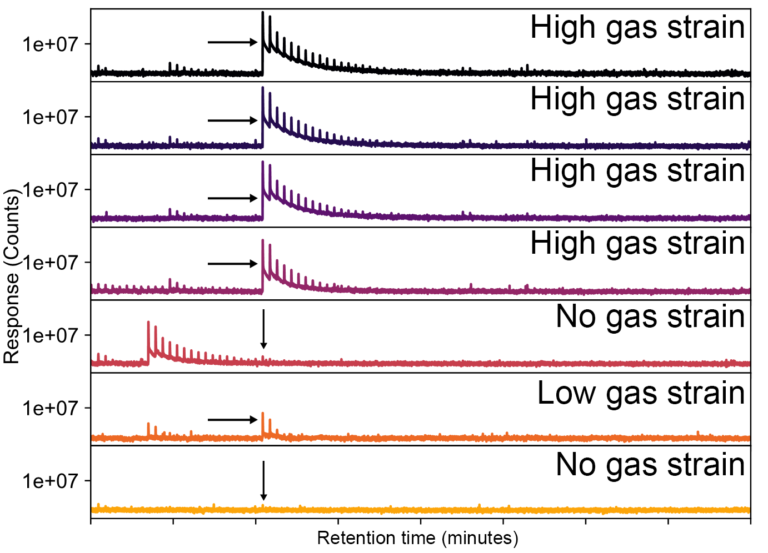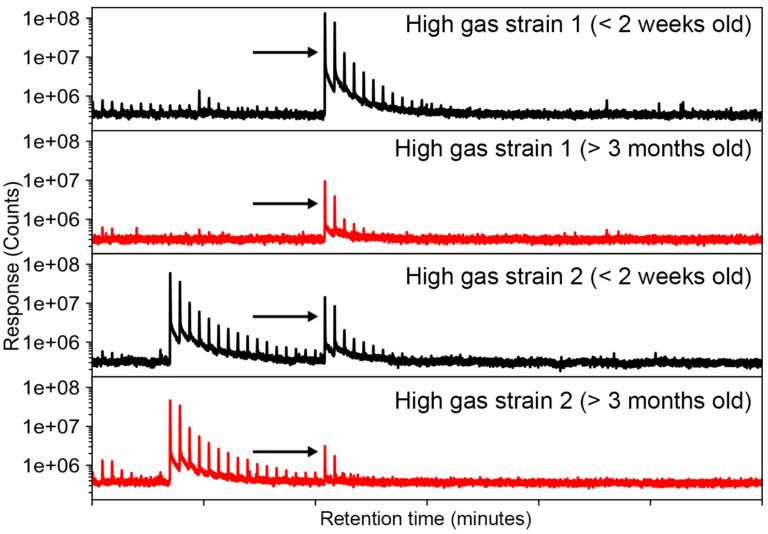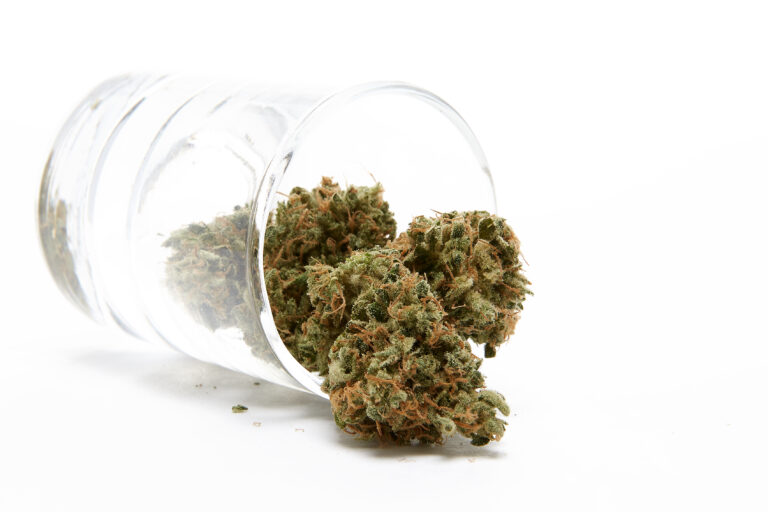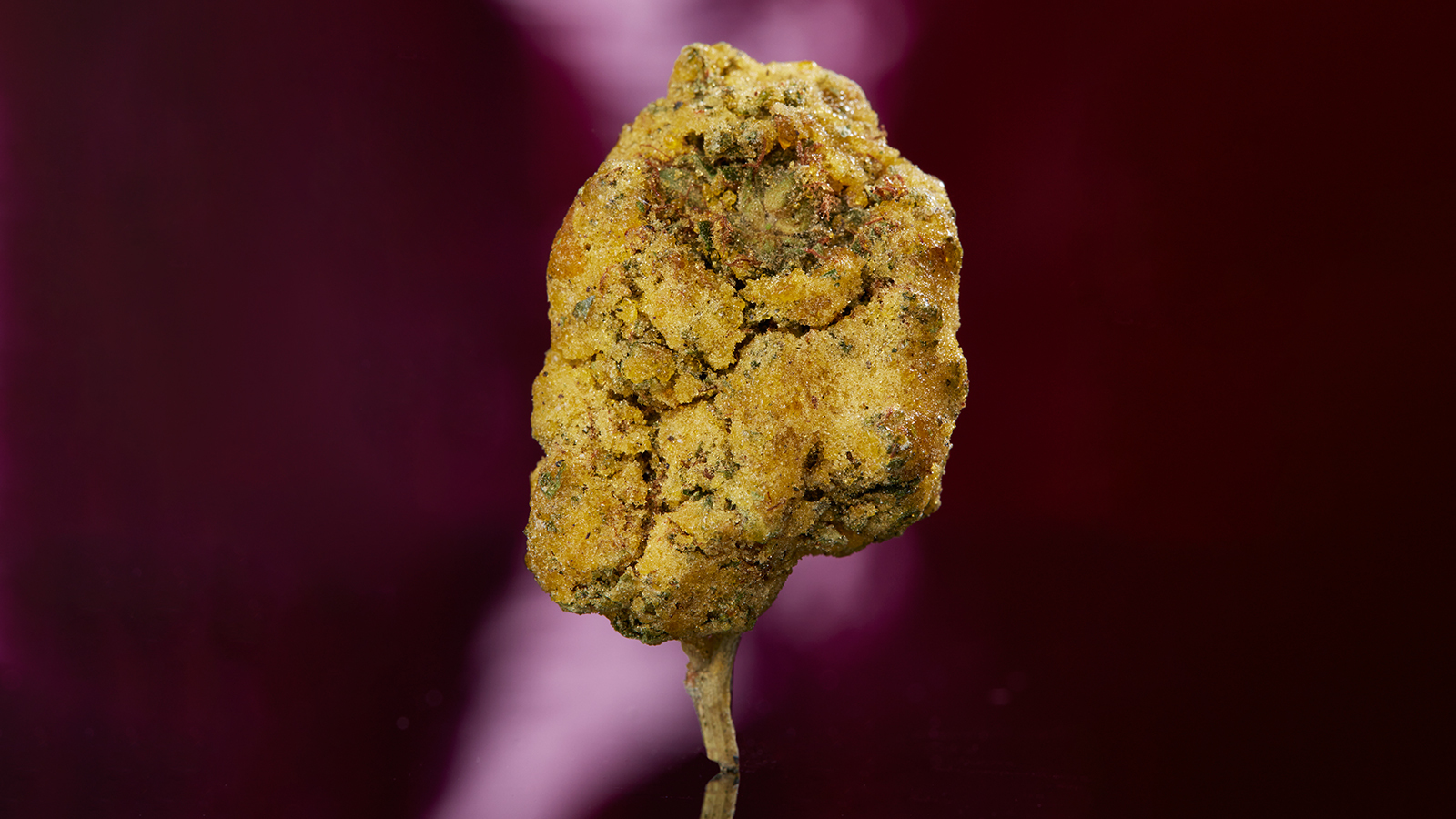As ubiquitous as “dank” may be in cannabis culture, it's a term with many meanings. Dank can refer to the high quality of a particular product and a specific aroma of cannabis. Recent research has even revealed that dank is, in fact, a precise combination of terpenes present in particular cultivars of cannabis — like OG Kush and Diesel, for example. But what does the word mean exactly?
What is dank slang for?
According to the Oxford Dictionary, dank means "unpleasantly moist." It was first used in Middle English and is thought to be of Scandinavian origin. Dank maintained its meaning well into the rise of underground cannabis culture when the term "dank weed" began to describe high-quality bud.
 Photo by: Gina Coleman/Weedmaps
Photo by: Gina Coleman/WeedmapsImage lightbox

The term first appeared on the website Urban Dictionary in 2003 as a slang word for "sticky, hairy, stinky, and highly potent marijuana." It has since evolved to be the popular descriptor for high-quality, desirable cannabis that most consumers know today, and consumers now ask for dank weed when they want a strain with an unmistakable, pungent, gassy aroma and a high-potency experience.
Is dank a good thing?
The quality of a particular strain of cannabis is always subject to the consumer's preference, yet many users share the sentiment that dank weed is indeed desirable. Cannabis is a unique plant in its ability to produce endless varieties of aromas and flavors with remarkable depth and complexity. The thousands of strains on the market today evolved not only in potency but in fragrance, many of which are difficult to describe. Dank is elusive, and yet most consumers can open a bag of weed and unmistakably identify dank by its overwhelming gassy pungency.
The researchers at ABSTRAX recently conducted a study to determine what terpenes, cannabinoids, and other chemicals make up a metric they call "the Gas Factor"—the gassy, diesel-esque smell of dank weed that can be measured. The team used advanced 3D gas chromatography to study traditionally dank strains like OG Kush and uncover what properties actually make them dank. During the study, ABSTRAX identified more than 200 compounds that worked together to create the complex, nuanced aroma of the dankest buds on the market.
Further, ABSTRAX was able to directly correlate the presence, amount, and intermingling of certain compounds in a cannabis strain with desirable aromas — the more of these specific compounds a strain has, the danker it is.
 Photo by: Courtesy of ABSTRAX
Photo by: Courtesy of ABSTRAXImage lightbox

The ABSTRAX study also found that dank cannabis loses its aroma over time. This holds true with other studies observing the lifespan and degradation of cannabinoids and terpenes after exposure to light and heat.
 Photo by: Courtesy of ABSTRAX
Photo by: Courtesy of ABSTRAXImage lightbox

Is dank indica or sativa?
In short, dank is neither indica nor sativa. While consumers and dispensaries still find these blanket terms useful, the words "indica" and "sativa" really only describe what the plant looks like as it's growing — not the effects you can expect to feel. Research increasingly suggests that the presence and combination of various compounds, including the hundreds discovered by ABSTRAX, contribute both to a strain's scent and the different psychoactive effects that cannabis provides, a phenomenon otherwise known as the entourage effect.
The terpenes in a cannabis strain work together with THC and other cannabinoids to create a unique cocktail that contributes to the overall cannabis experience. Consumers sense this instinctively; dispensary-goers are often drawn to a particular strain of weed by its aroma over any other attribute. The nose also knows whether a cultivar is of low quality. Brick weed often smells moldy and unpleasant, repelling the senses.
 Photo by: Gina Coleman/Weedmaps
Photo by: Gina Coleman/WeedmapsImage lightbox

Let's return to the question of whether dank is indica or sativa. Dank most often refers to cannabis that exudes a gassy, pungent aroma that's signature of most OG strains. OG Kush is one of the cannabis community's most beloved varieties. Most OGs share commonly reported effects, including sedating relaxation and a physical "stoned" feeling. These effects align with what many consumers associate with indicas, so dank weed could indeed be considered as such.
However, the many cannabis hybrids on the market have produced dank strains with the energizing effects characteristic of a classic sativa as well. With so many cultivars on the market, there's a good chance any strain could contain the compounds that produce dank's gassy aroma. When dank is used to describe high-quality bud in general, it's more challenging to determine what kind of psychoactive experience the strain in question will provide. But that shouldn't stop you from seeking out the dankest of the dank and discovering what works best for you.
Written by Lesley Nickus | Featured image by Gina Coleman/Weedmaps




